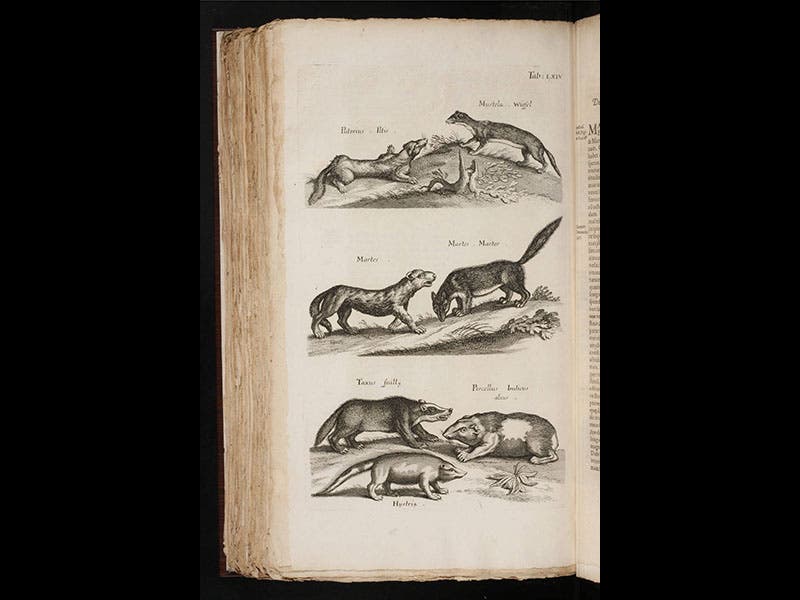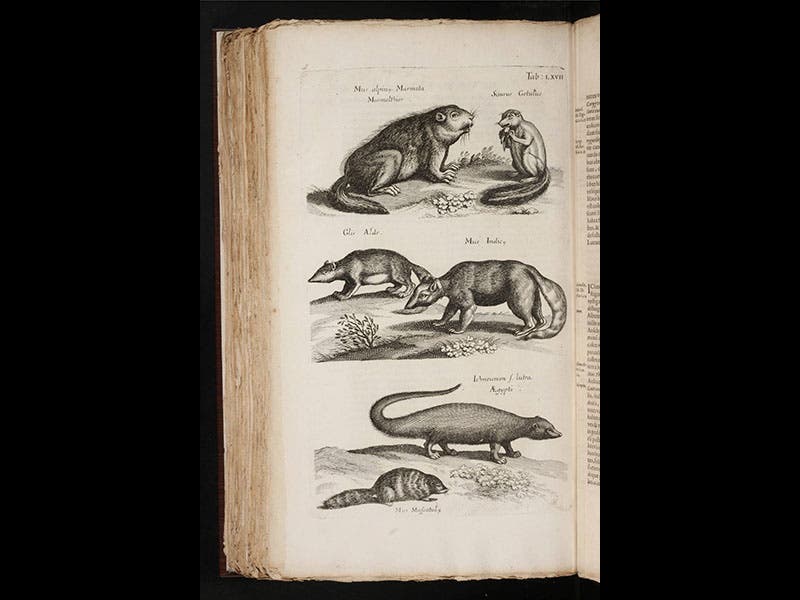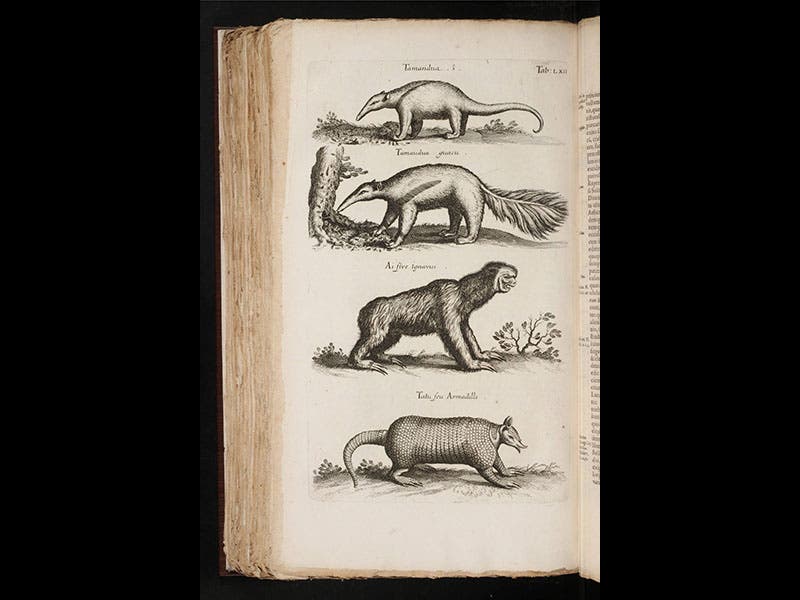Scientist of the Day - Joannes Jonston
Joannes Jonston, a Polish naturalist descended from a noble Scottish family, was born Sep. 15, 1603. In 1650, Jonston published the initial volume of his Historia naturalis, the first new natural history encyclopedia since Ulisse Aldrovandi began issuing his Natural History in 1599. Jonston’s was one of the first zoological encyclopedias to utilize engravings instead of woodcuts, and the reader is treated to splendid views of badgers and polecats (second image), raccoons and ichneumons (third image), as well as newly discovered South American mammals such as howler monkeys and capybaras (fourth image), and anteaters and sloths (first and fifth images).
Aldrovandi filled 13 fat volumes with his encyclopedia of nature; Jonston squeezed his into 6 parts that fit nicely into only 2 volumes, and he included many more species to boot. How did he manage that? Jonston did so by leaving out the references to animal fables, proverbs, numismatics, hieroglyphics, allegories, morals, and emblems, all of which had been a necessary element of Renaissance natural history. For many reasons, but mostly because animals of the new world did not have any allegorical or emblematic meanings, Jonston omitted everything that wasn’t related to description of the animal itself—and unwittingly established the tone of natural history ever since.
We bought our copy of Jonston’s Historia naturalis at auction in 1982 and since the bindings had deteriorated, we had the two volumes rebound in beautiful blue half-calf bindings. The volumes are so attractive that one of them was chosen to be the model for one of the large book spines erected outside the Kansas City Public Library parking garage (sixth image). The spine label was changed from “Jonston, Hist. Nat. de Avibus” to read: “A Tale of Two Cities, Charles Dickens”. In the photo above, Dickens nee Jonston sits between Lord of the Rings and Charlotte’s Web.
Dr. William B. Ashworth, Jr., Consultant for the History of Science, Linda Hall Library and Associate Professor, Department of History, University of Missouri-Kansas City. Comments or corrections are welcome; please direct to ashworthw@umkc.edu.












